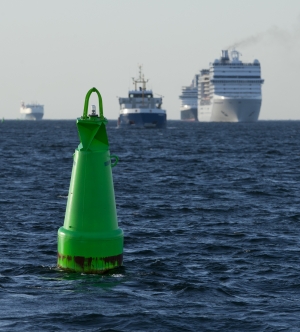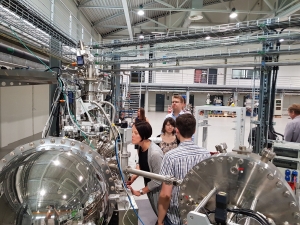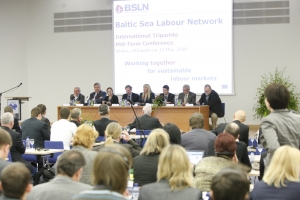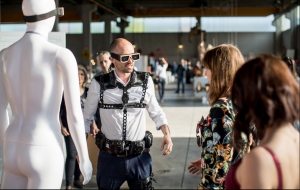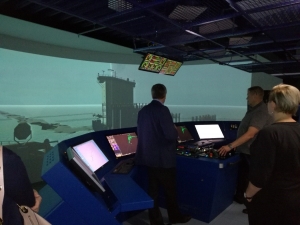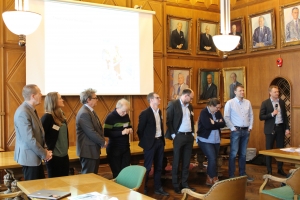EUSBSR flagship status - what does it mean for a project?
In September, four new flagships were approved in the National Coordinators' meeting. The actions of the EU Strategy for the Baltic Sea Region are implemented by means of Flagships. Flagships demonstrate the progress of the Strategy, and may serve as pilot examples for desired action in a given field.
We interviewed the projects and asked what the status means to them.
5 ways to make the most of manure
The sun lovers of the Baltic Sea countries were bathed in the much awaited heat wave in summer 2018. But too often the perfect summer day at the beach or sailing boat was spoilt by toxic blue green algae in the sea. In many coastal countries, emotions ran high on traditional and social media to find the culprits to the algae overload. Manure was one of the accused.
Innovation is Better if Delivered Together
The period of the EU Strategy for the Baltic Sea Region (EUSBSR) promotion campaign (marked with #EUSBSRBetterTogether) has been an exciting time for Baltic TRAM, a project which is part of the Baltic Science Link flagship of the Policy Area Innovation.
IT’S ABOUT COURAGE! - Get to know the video series by PA Bioeconomy
Made of Courage is a short video series produced by the PA Bioeconomy. The series consists of five videos telling stories of people driving the development of the bioeconomy in the Baltic Sea Region. It celebrates entrepreneurial spirit, disruptive innovation and those who challenge the use of fossil and artificial resources by creating viable options that already work.
Joint labour policy - made in the Baltic Sea Region
It’s been ten years since the global financial crisis expanded from the United States to the European Union. Among other negative effects, the Baltic Sea region was unpleasantly surprised by an emigration crisis in the east and intensive immigration to the west of the region. Transnational Interreg cooperation was vital not only to help people struggling with the different labour markets, but also to foster European integration for a more competitive Europe on a macro-regional level.
Baltic Sea region as a design comfort zone for seniors
Despite the progressing age of communities in the Baltic Sea region, needs of the elderly are not being sufficiently addressed by producers of furniture and home equipment. In the project BaltSe@nior, co-financed by Interreg Baltic Sea Region, by developing prototypes of intelligent furniture and upgrading design trends, companies are offered thriving opportunities to develop more suitable products for the elderly. Transnational cooperation that increases the comfort of life of seniors and at the same time fosters a more competitive Europe drew the attention of EU Commissioner Corina Crețu, who recently paid a visit to the project.
Flagship projects FAMOS, STM Validation and WINMOS II - together for safer and more efficient shipping in the Baltic Sea
The Baltic Sea is a special region in many ways. It is one of the busiest maritime areas in the world, it is also one of the largest brackish water areas in the world and has a very sensitive and unusual combination of freshwater and ocean species, and it is surrounded by nine countries which all work hard on holistic regional collaboration.
BalticRIM helping spatial planners see the cultural heritage of the sea
The Interreg project BalticRIM, also a Flagship of the EUSBSR under Policy Area Culture, integrates maritime cultural heritage of the Baltic Sea into maritime spatial plans to safeguard it for the future. Matthias Maluck from the State Archaeological Department of Schleswig-Holstein explains what maritime cultural heritage is and why and how it should be preserved. BalticRIM frames cultural heritage of individual countries in a transnational perspective and thus delivers territorial cohesion. The interview was conducted by the Interreg Baltic Sea Region Programme.
SMART BLUE REGIONS – enhancing blue growth opportunities of the Baltic Sea region
SMART BLUE REGIONS project seeks to enhance blue growth opportunities based on increased capacity of Baltic Sea Regions to implement Research and Innovation Strategies for Smart Specialisation (RIS3).
"Let’s Communicate" seminar on green and safe shipping held in Oslo
Representatives from EUSBSR met with Norwegian maritime actors to show strategic and financial possibilities as well as concrete projects for Norwegian actors that want to become involved in Baltic Sea Region cooperation. The future of shipping, its technologies and competences - were also discussed and presented.




